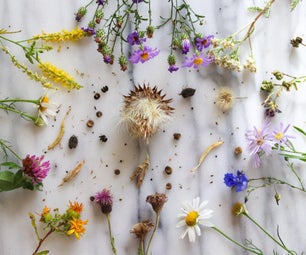Introduction: Grow Onions From Discarded Onion Bottoms
This Instructable outlines how to grow fresh onion plants from discarded onion bottoms that would otherwise be thrown in the trash. You can theoretically create an endless supply of onions without ever having to buy bulbs or seeds, and if you're as big of an onion lover in the kitchen as I am, you'll have a full bed of onions in no time.
3 Week Update:
New roots have formed on the example onion used in this Instructable, and the starts of leaves are forming which can be seen by the two distinct rises at the top of the onion. This onion will more than likely form two plants just like fully formed example on this Intro page.
4 Week Update:
New leaves are forming above the soil, and it's clear that this plant will be able to be divided. It has now gone through a hard freeze in its pot sitting on a growing table.
Step 1: Materials
- Onion
- Clean Knife
- Cutting Board
- Starter Pot with Potting Soil (optional)
Step 2: Slice Off Onion Bottom
Allow to dry for a few hours to a couple days in a shaded, well-ventilated area to allow for callousing.
Note: You might only need a few hours for callousing. If the cut portions are dry to the touch and slightly shriveled, it very well might be calloused enough.
Note: I'm skipping the dry time for this Instructable.
Step 3: Potting
Fill the starter pot 2/3 of the way full and compact.
Create an indentation in the center to cradle the onion bottom and allow for good soil contact.
Cover with 1-2" of soil.
Water as needed.
Note: You can skip the starter pot if you can't be bothered and plant it directly in the ground.
Step 4: Finish
Once the onion bottom has developed a few leaves, remove from the pot.
Remove old onion scales.
Separate plants as needed by slicing between plants and leaving a portion of the roots attached. You may have more than 1 plant develop from a single onion bottom.
Replant in a prepared growing bed.
Cut leaves down to 1/3 of the size to allow the bulb to develop. This might seem harsh, but the onion will regrow those leaves with less stress.
Repeat the process. Harvest as green onions or fully developed mature onions.













